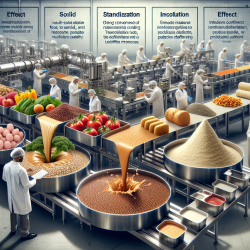Introduction
Dysphagia, a condition characterized by difficulty in swallowing, affects approximately 8% of the global population. It poses significant risks such as malnutrition, dehydration, and aspiration pneumonia. To manage these risks, the modification of food textures and liquid thickness has become a cornerstone of dysphagia management. However, the lack of standardized terminology across different regions poses a threat to patient safety and effective treatment.
The Need for International Standardization
The research article, "The Need for International Terminology and Definitions for Texture-Modified Foods and Thickened Liquids Used in Dysphagia Management: Foundations of a Global Initiative," highlights the urgent need for global standardization. The variability in terminology and definitions across countries increases the risk of patient harm due to miscommunication and inconsistent treatment protocols.
Benefits of Standardization
International standardization offers numerous benefits:
- Improved Patient Safety: Consistent terminology reduces the risk of choking and aspiration by ensuring that healthcare providers and caregivers are on the same page regarding dietary modifications.
- Enhanced Communication: A universal language facilitates better communication among healthcare professionals, researchers, and industry partners, leading to improved patient care.
- Research and Development: Standardization allows for more accurate research outcomes and the development of effective therapeutic interventions.
Implementing Research Outcomes
Practitioners can improve their skills and patient outcomes by implementing the research findings:
- Stay Informed: Attend conferences, webinars, and workshops to stay updated on the latest developments in dysphagia management and the progress of international standardization efforts.
- Collaborate: Engage with colleagues and industry partners to share knowledge and best practices in the preparation and administration of texture-modified diets.
- Advocate for Change: Support initiatives aimed at developing and implementing standardized terminology and definitions in your region.
Conclusion
The push for international standardization of texture-modified foods and thickened liquids is a critical step towards enhancing the safety and quality of care for individuals with dysphagia. By embracing these changes, practitioners can play a vital role in advancing the field and improving patient outcomes.
To read the original research paper, please follow this link: The Need for International Terminology and Definitions for Texture-Modified Foods and Thickened Liquids Used in Dysphagia Management: Foundations of a Global Initiative.










